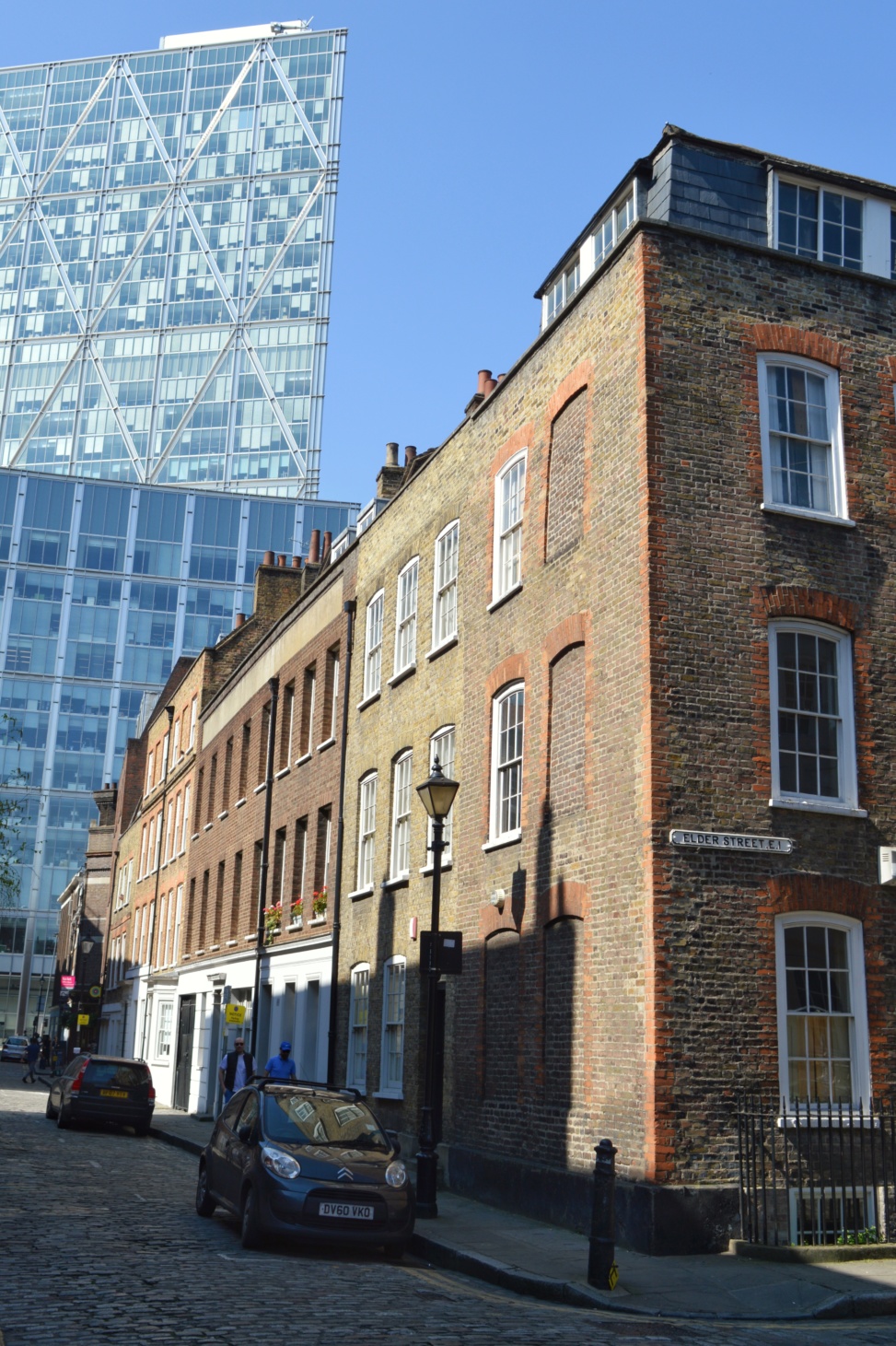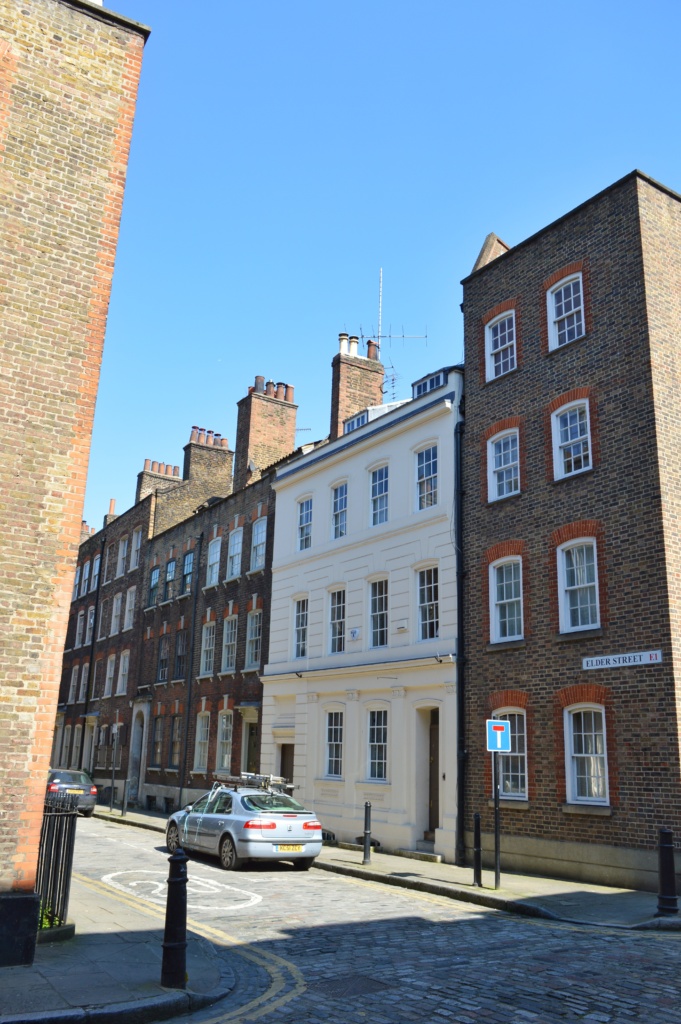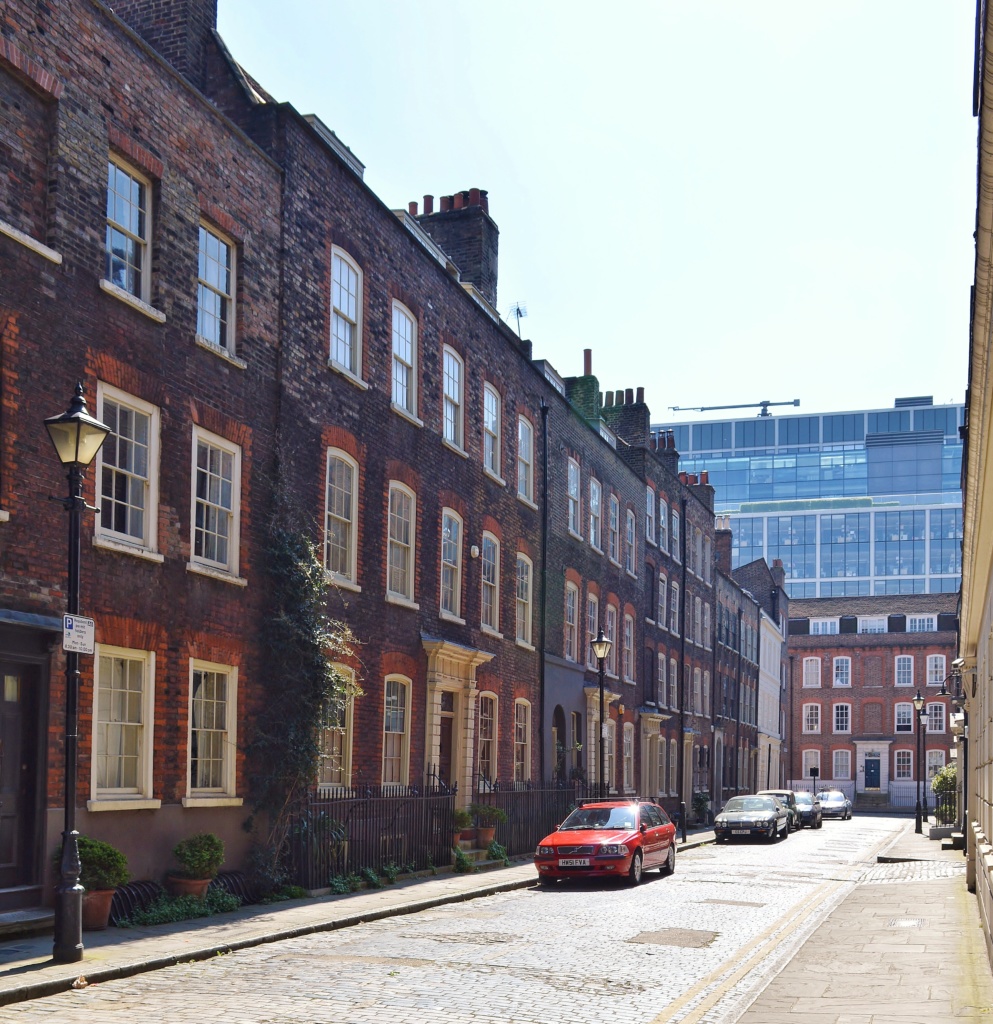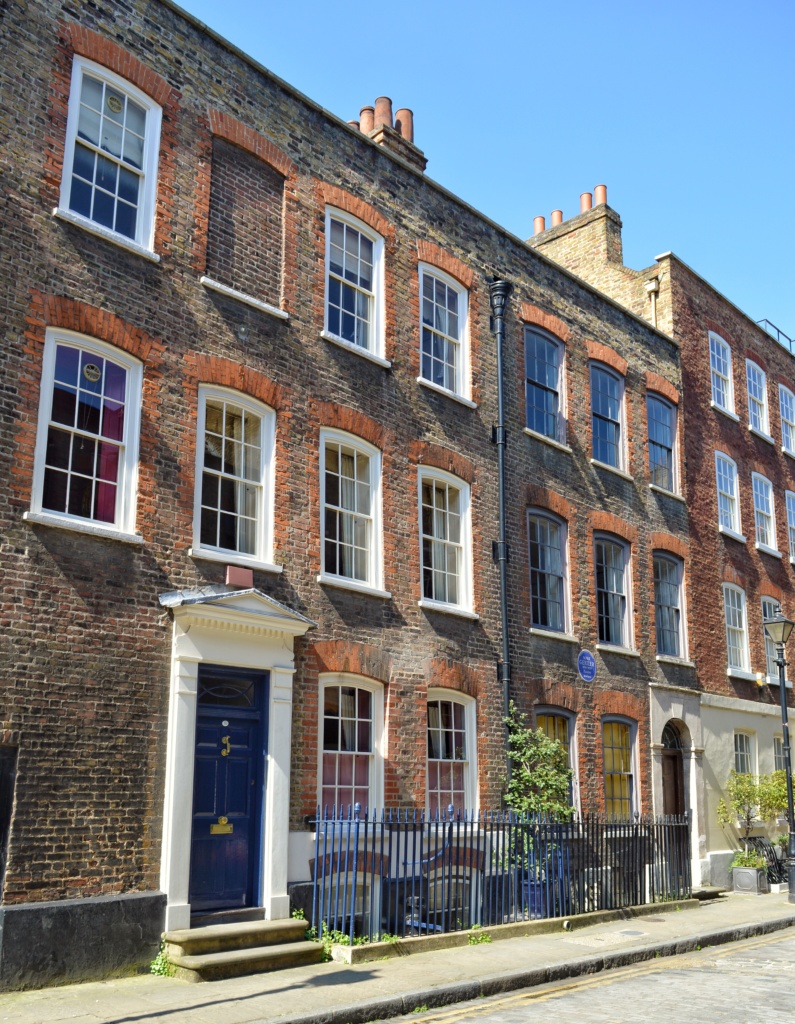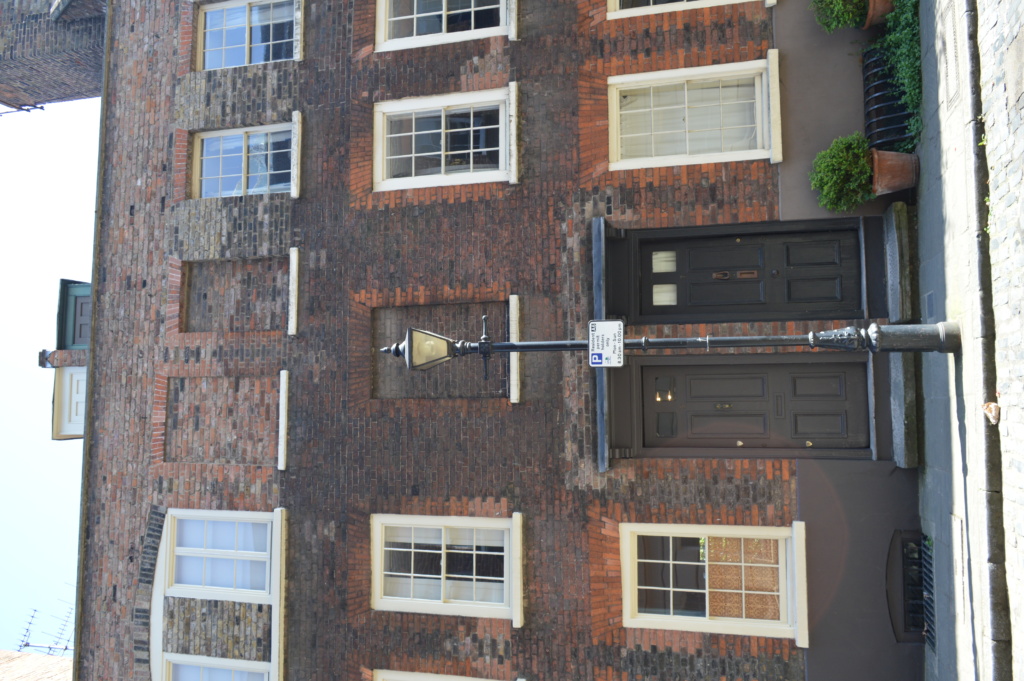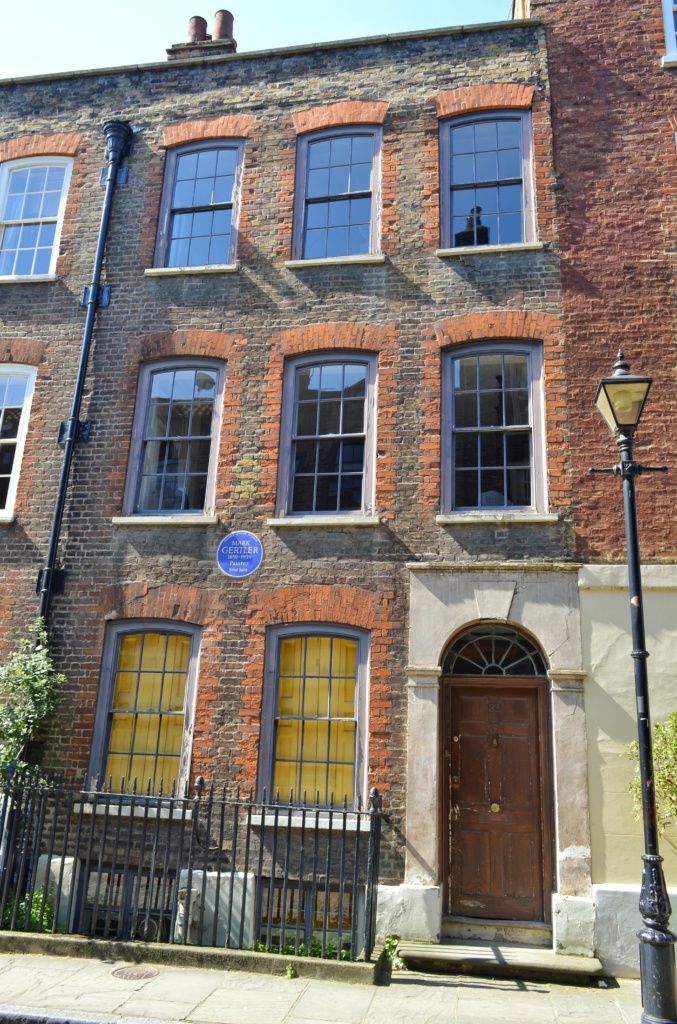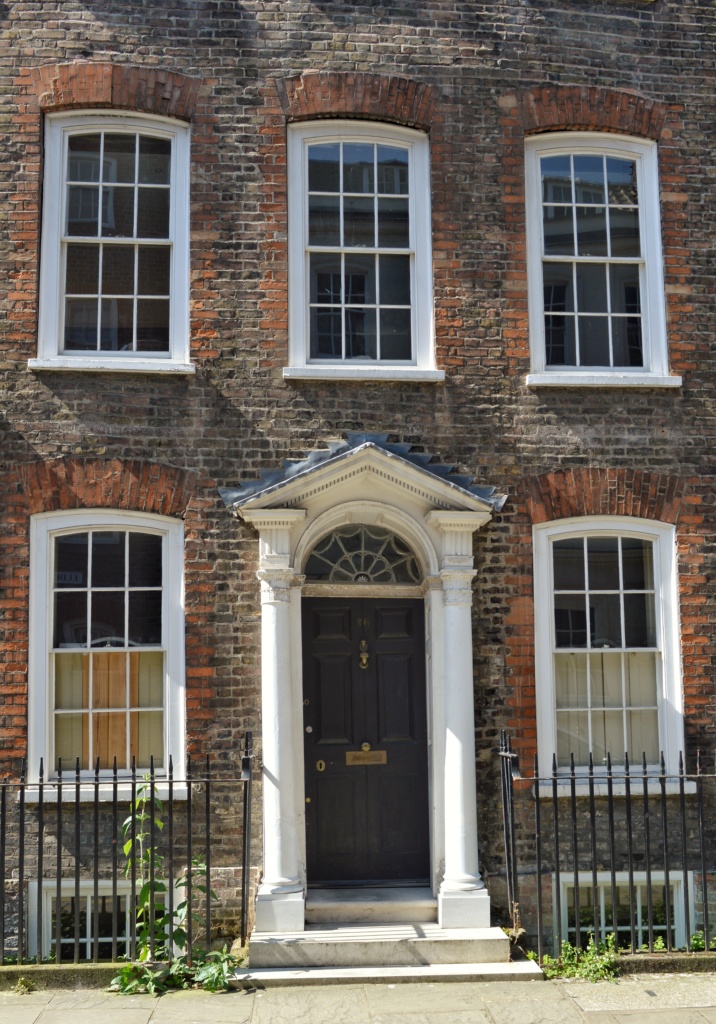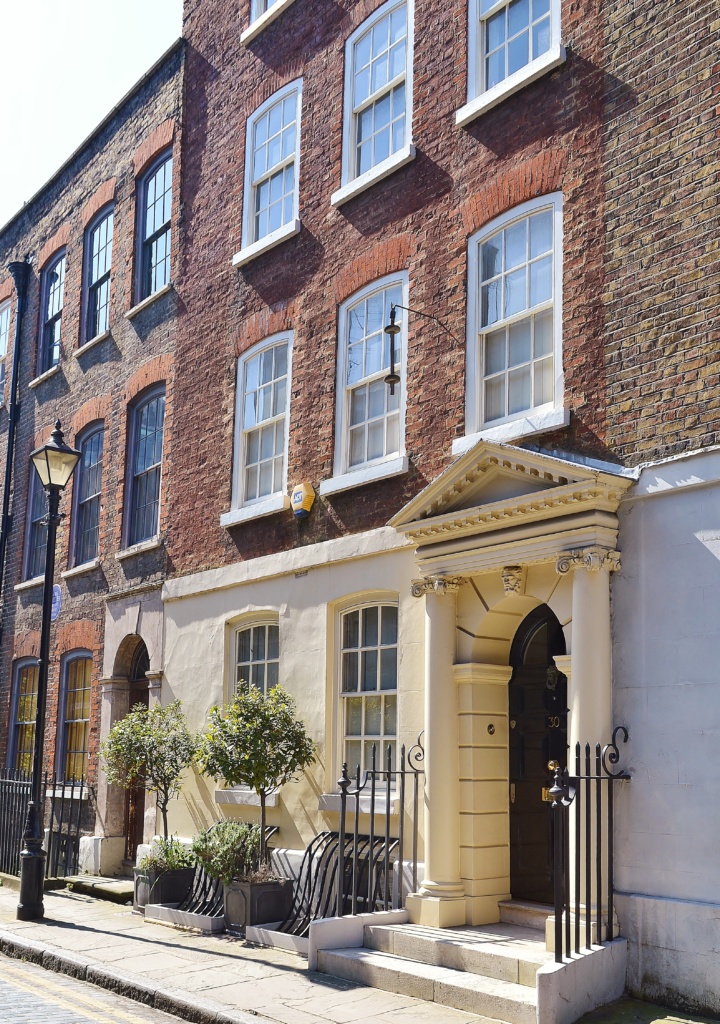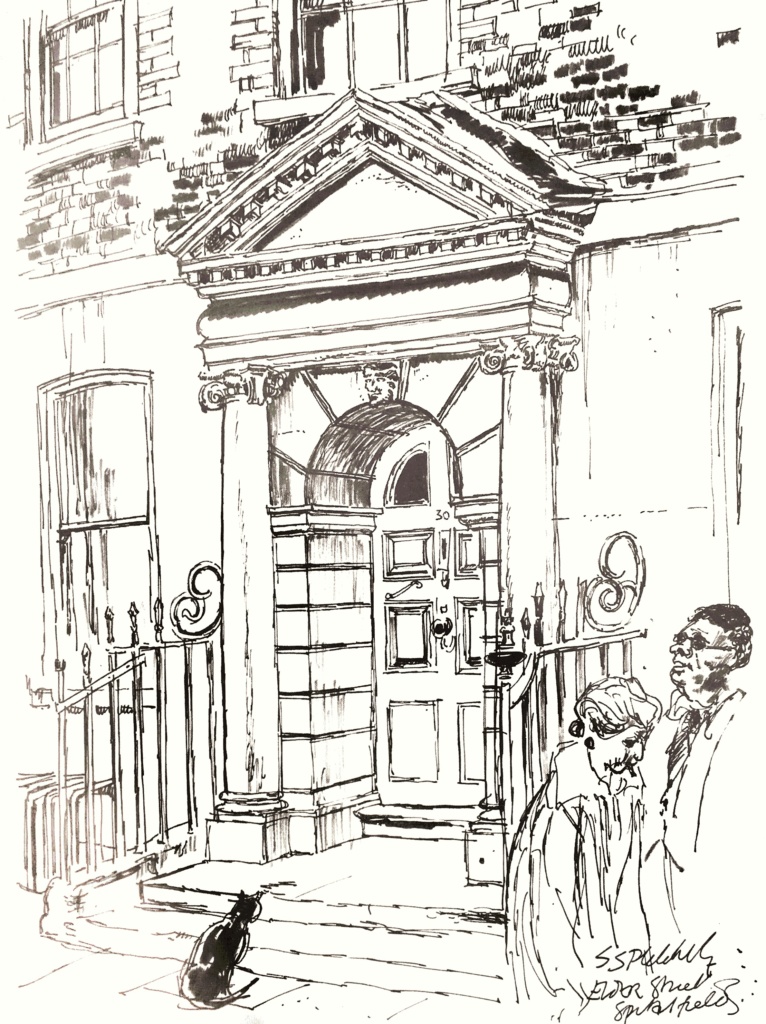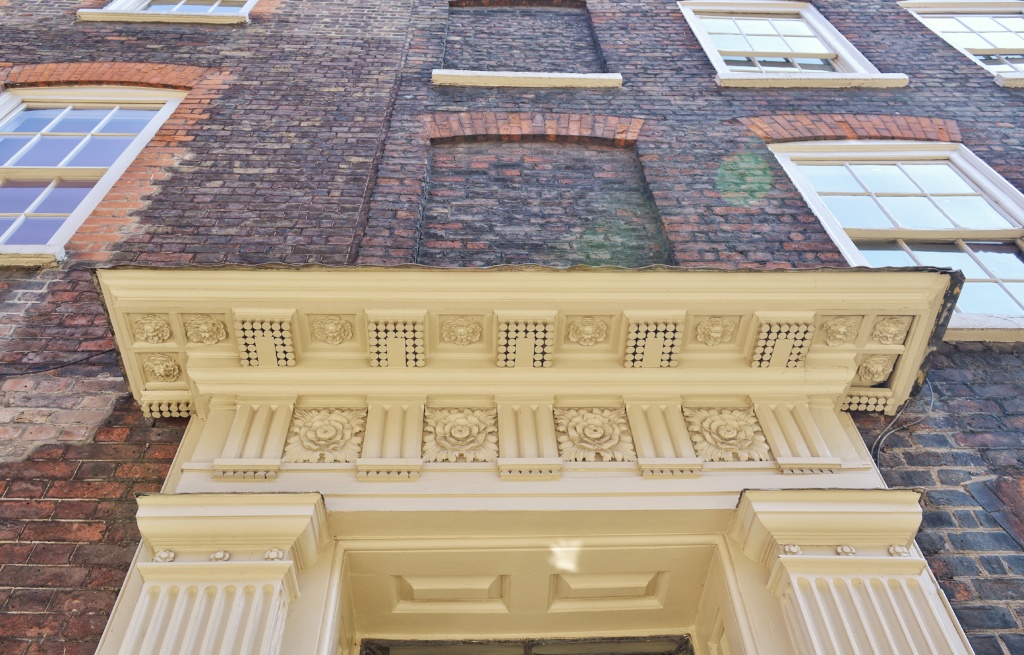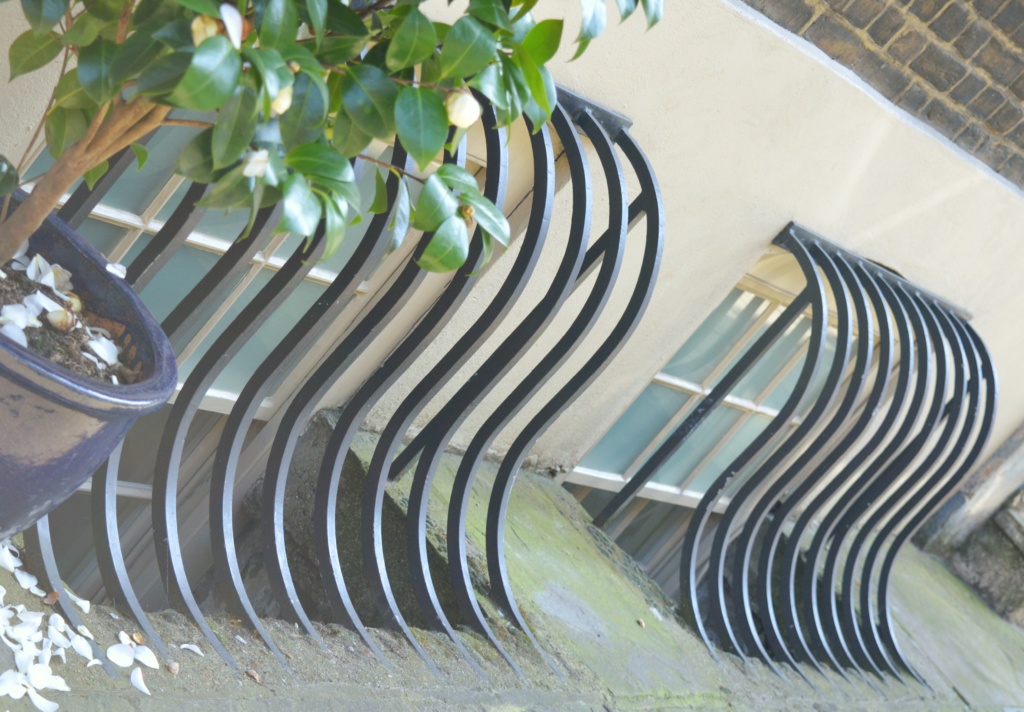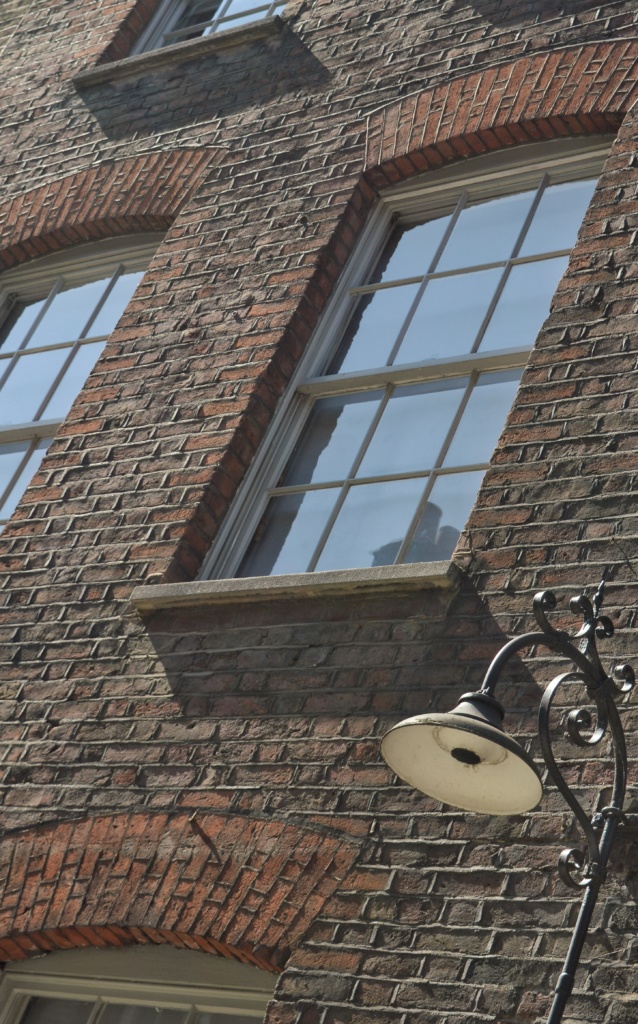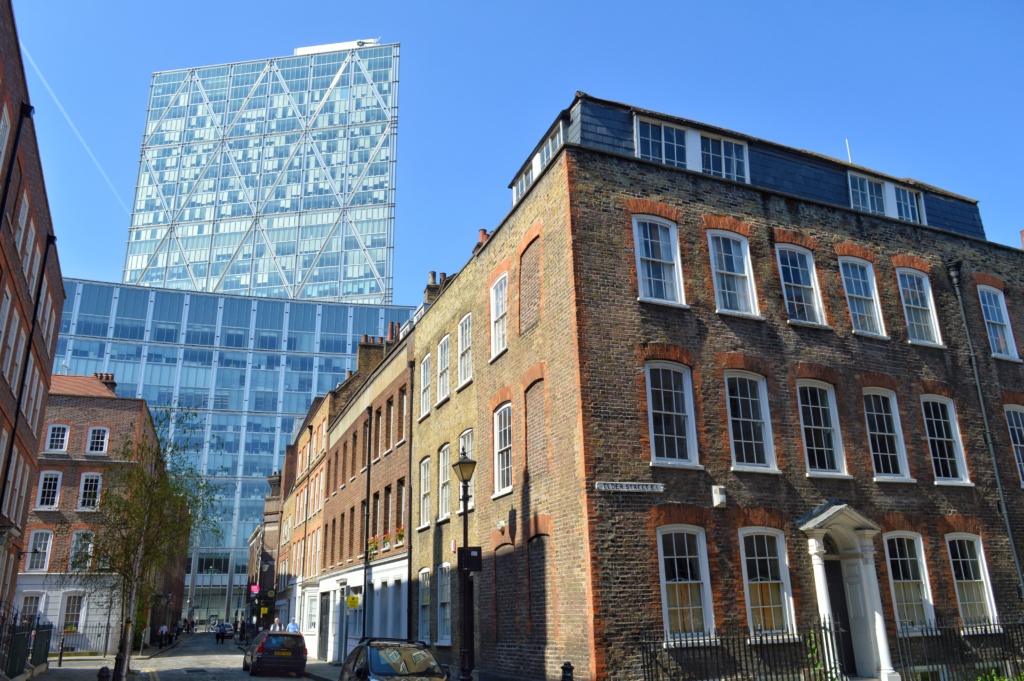There is a scene at the beginning of the Westworld TV series where a man from the modern world steps through the doors of the theme park to find himself in a perfectly replicated Wild West and his jaw drops in amazement. When I turned the corner into Elder Street for the first time last week I gawped at the Georgian splendour around me in a similar state of amazement and disbelief.
Elder Street is one of the streets in the old Liberty of Norton Folgate in Spitalfields to the north-east of the City of London. It’s one of the success stories of the Preservation Movement of the second half of the twentieth century. Up to the 1960’s these kinds of Georgian houses were being demolished to make way for modern developments in the local area. The houses of Elder Street were listed to prevent their removal and are now preserved in rude health. Praise the Lord!
Both sides of the street have houses of differing dimensions with some splendid doorways.
The houses were put up in the 1720’s for the families of successful Huguenot silk merchants; this area was a centre of London’s silk industry in that period.
Along with Church Row in Hampstead, Elder Street is one of London’s most beautiful thoroughfares. It’s proximity to much modern metal and glass architectural monstrosity and location in the heart of the city gives it the edge for me. I would love to live in one of them and pretend the Industrial Revolution hadn’t happened.
It has not always been such a prosperous place. Between the original Huguenot occupation and more recent times when the houses have been renovated to their current superb state, Spitalfields in general and Elder Street were among the poorest slum areas of the capital.
Geoffrey Fletcher, describes whole families living in a single room in a house during Victorian times and being so poor that they could not afford to bury corpses but simply left them to rot in a corner.
That level of poverty is hard to imagine and certainly here among these wonderful houses, yet that is part of the history of the city; a recurring battle between wealth and poverty, good times and hard times.
I was brought to Elder Street in search of a doorway. This particular doorway in fact. Geoffrey Fletcher had described it in his 1965 book Pearly Kingdom.
It’s still here and largely unchanged as you can see compared to the sketch below which accompanied his description.
The street, though, has changed quite a bit since 1965 when it was still down at heel. Fletcher refers to the area’s “special qualities stemming from the slum life of the area and the decayed splendour of its architecture”. It still has a flavour of the extraordinary “depths of poverty and inertia” that descended on the area during the Victorian era and after the departure of the Huguenots who built these lovely houses in more prosperous times.
“Elder Street has a selection of fine doorways on the opposite side of the street to the one illustrated, two having rusticated pilasters supporting frieze and cornice. In another the metopes are filled with carved rosettes entirely occupying the square. Even the area railings, in a flattened S-shaped curve, are eloquent of the beauty and sensibility of eighteenth century domestic architecture”.
The carved rosettes are still in situ as you can see above. And the railings are well kept and remain noteworthy, below.
There are fine street lamps and lovely ironwork details up and down the street.
But above the Georgian skyline modern titans tower.
